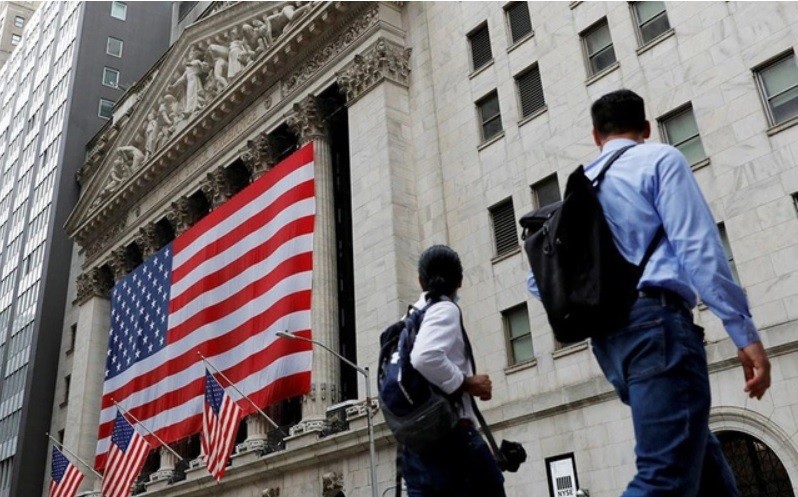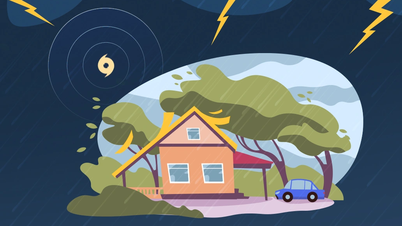 |
| According to the WSJ, the US has yet to see signs of the recession that many people believe will happen this year. (Source: Reuters) |
More optimistic than expected
Companies are hiring, people are spending freely, the stock market is recovering and the housing market is showing signs of stabilizing. All of this suggests that the Fed’s efforts to control inflation have not significantly weakened the economy .
Instead, the lasting impact of the pandemic is creating opportunities for consumers, as well as employers, and this momentum could help keep the economy moving in the right direction.
People in the US are spending more money on things they have been restricted from during the lockdown, like travel , concerts and eating out. Businesses are hiring more workers to meet the suppressed demand.
The government ’s response to the pandemic, including keeping interest rates low and providing financial support, has left consumers and businesses with a flood of cheap money and debt. The inflation the Fed is worried about is actually leading to higher wages and profits, which in turn fuels more spending.
Many economists believe the Fed's rate hikes will eventually cool the economy and reduce inflation, potentially leading to a recession later this year. However, the latest data shows the economy is growing better than expected.
Specifically, job growth remains strong, meaning people have more money in their hands. In May 2023, employment rose by a surprising 339,000 jobs, and the previous two months' numbers were also higher than initially estimated.
The National Bureau of Economic Research (NBER), which studies the economy and determines whether the U.S. is in a recession, also said the numbers were positive. Most of the indicators they look at show the economy is healthy.
The labor market is still recovering from the pandemic, with sectors such as health care, leisure and accommodation. Governments are also hiring more workers. However, some local governments, schools, and leisure and accommodation services have not yet reached pre-pandemic employment levels due to labor shortages.
There are more jobs available than people looking for them, which is driving up wages. In May, average hourly wages rose 4.3% year over year. This is similar to gains seen in March and April.
The job market could remain tight as millions of older workers have dropped out of the workforce since the pandemic began. The percentage of Americans 16 and older who are working or looking for work has held steady at 62.6%.
Consumers in the US have a lot of savings. According to a report from the San Francisco Federal Reserve, Americans have about $500 billion in savings after the pandemic. This means they can spend money on activities like travel, concerts and cruises, even when prices are rising.
Airlines like Southwest Airlines and American Airlines are seeing increased demand for air travel, even as fares have increased. The number of people traveling through airports is also up compared to before the pandemic.
Will the Fed continue to raise interest rates?
Next week, the US Federal Open Market Committee of the Fed will officially enter its June policy meeting. This is one of the most important meetings of the year, because there may be a turning point in monetary policy.
Bloomberg reported that Fed officials are likely to keep interest rates unchanged in June, but do not want to stop raising them completely.
Minutes from the previous meeting showed Fed officials were hesitant to tighten further, but said the pace of inflation cooling was slow. Futures prices showed investors were betting on a 70% chance of the Fed raising rates in July.
The strength of the economy is making it difficult for the Fed to decide on interest rate policy. Economic activity and inflation have not slowed as much as they thought. Since March 2022, the benchmark interest rate has increased from near zero to a range of 5% to 5.25%, the highest level in 16 years.
Typically, rising interest rates hurt the stock market and the housing market. But both are still doing well. Home sales fell last year but have been rising since January 2023. The shortage of homes for sale has boosted home prices, and builders are confident as more people look for new homes. This strength in the economy suggests the Fed may need to raise interest rates further to keep inflation in check.
The Fed recently said it would keep interest rates steady for now, but could raise rates later this year. While some signs of the rate hikes are starting to have an impact, such as slowing business investment and falling average hours worked, it may take some time for the full impact to be felt.
Many economists and business executives believe it is only a matter of time before rising interest rates begin to weaken the economy.
Wall Street economists say the Fed's fight against inflation may have a lag time in impacting the economy. The recent series of sharp interest rate hikes may not be felt clearly this year, or if they are, they may not be felt evenly. Therefore, they say there is a more than 30% chance of a recession this year, and a 50% chance by 2024.
Source
























![[Photo] National Assembly Chairman Tran Thanh Man visits Vietnamese Heroic Mother Ta Thi Tran](https://vphoto.vietnam.vn/thumb/1200x675/vietnam/resource/IMAGE/2025/7/20/765c0bd057dd44ad83ab89fe0255b783)
















































































Comment (0)